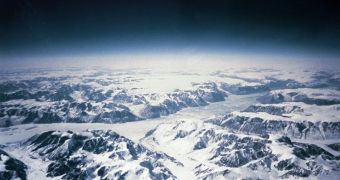According to the conclusions of a new scientific study, it would appear that glaciers in Greenland contribute to rising sea levels, but not to the levels researchers first calculated. A new study found that the island's many glaciers can only release a limited amount of ice and water into the global ocean.
The study, supported by NASA and the US National Science Foundation (NSF), sought to analyze the speed at which around 200 glaciers on the large island are flowing towards the Atlantic Ocean. This type of study is very important, since Greenland is the world's second largest ground-based ice reserve.
The Antarctic is the only place that has more land-based ice. Unlike sea-based ice, the one on land has the potential to contribute extensively to global sea level rise. In the past, scientists determined that Greenland's glaciers were melting and moving very fast.
Now, it would appear that the speed at which they travel has been overestimated. However, these are only early results, the team behind the work says. Experts add that more studies are needed before a clear trend can be extracted from the available data.
Details of the new investigation were published in the May 7 issue of the top journal Science. Experts say the studies such as this one – using the newest and most precise observation methods – oftentimes refine the conclusions of previous investigations.
The upper limits of sea-level rise – to which Greenland glaciers' speed contributes – is used for climate modeling in complex computer simulations. The more precise data experts have access to, the more detailed projections of future climates become.
“This study provides more evidence that the rate at which these glaciers can dump ice into the ocean is indeed limited. What remains to be seen is how long the acceleration will continue--but it appears that our worst-case scenarios aren't likely,” researcher Ian Howat explains.
He holds an appointment as an assistant professor of Earth sciences at the Ohio State University, and is a member of the Byrd Polar Research Center. Howat was also a coauthor of the Science paper.
“This study is a great example of the power of high-resolution data sets in both space and time, and the importance of looking carefully at as much data as possible in helping make the best predictions we can of future changes,” adds Henrietta Edmonds, quoted by EurekAlert.
The expert is a program director for Arctic Natural Sciences with the NSF Office of Polar Programs. She explains that the glaciers show no signs of stopping their motions, and says that they could contribute as much as 4 inches (10 centimeters) to sea level rise by 2100.

 14 DAY TRIAL //
14 DAY TRIAL //